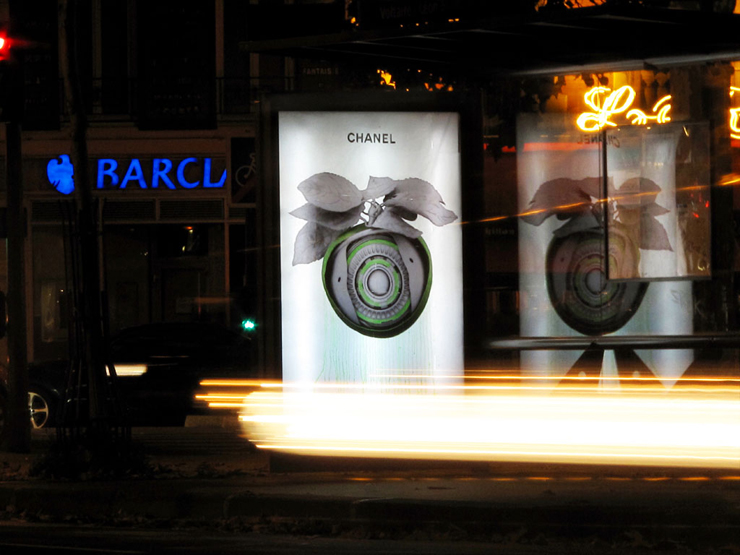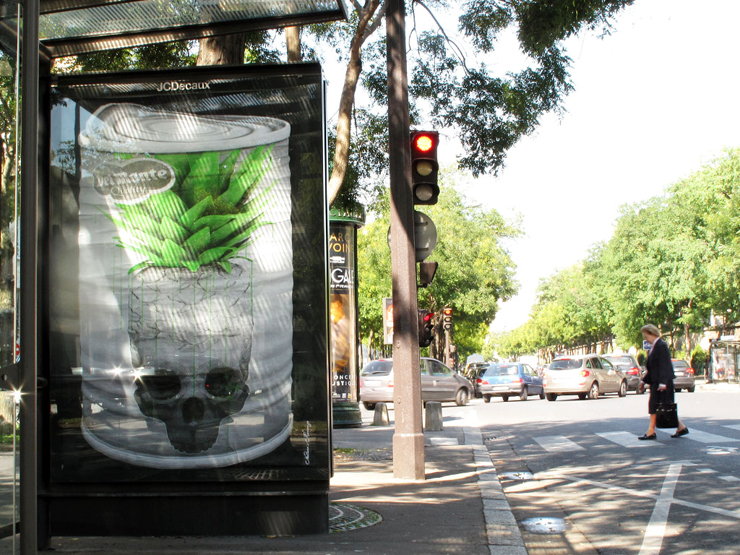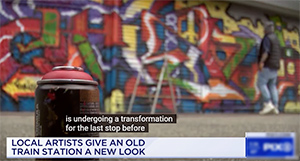“Co-Branding”
Who decides what messages and images are displayed in the public? When it comes to advertising, images and graphics are supposedly governed by “community standards”, meaning a body of some sort passes judgment on the worthiness of an image or message based on a common understanding of the collective opinion. More often than not, unless there is a vocal protest from a potent fraction of a community, standards are merely the guidelines to push against to grab attention and a tiny piece of mind share.
As these standards evolve, so do the broadly drawn boundaries of what an advertiser can use to sell a product, whether it is on a sticker, billboard, mural, or high-gloss kiosk. “It’s almost like you can put a dildo on a billboard as long as the brand or logo is there to validate it as another normal commercial,” says French Street Artist Ludo, who has been merging his art with the commercial art in bus shelters.
Ludo’s series is called “co-branding”, a seamless appropriation of existing ads that can be strikingly beautiful and even unnoticeable by the casual observer. These pieces merge so well with the context that they might very well be mistaken by genuine ads. He talks about a piece that re-invents a Chanel advertisement by noting the high-concept imagery that appears in typical ads for high-end consumer goods. “The overabundance of ultra aesthetic visuals in some ads now, the kind of arty stuff that only Karl Lagerfield will enjoy, is so annoying to me that it made me want to hijack my own work and brand them as an other campaign. It’s funny how in fact people see it as advertising because of the logo but are also kind of disturbed by the image.”
Other Articles You May Like from BSA:
As we continue our one week residency on BSA for Street Art fan Spencey Elzey, he takes you to Paris to see what is happening on the street there right now. If you were to try to characterize the na...
Yarn Bombing! Yarn Storming! Tell me another yarn. Knitting and crocheting for the street is hardly new, but it is experiencing a great surge of interest right now - to the thrill of some who find it...
A bit of sérendipité, really, to be tooling around Wynwood in a holiday mindset and a rental car at the end of the year, and to look up to see Mantra on a cherry picker. We had just seen him in Brook...
Chomp chomp, slurp slurp, spraaaaaaaaayyyyyyyyyyy spray sp sp sp spraaayyyyyyyyyy. The sounds of a sidewalk barbecue and painting a new piece on a wall on a hot July day in Brooklyn. Also honkin...
Our weekly focus on the moving image and art in the streets. And other oddities. Now screening : 1. Chip Thomas and True Artivism BSA Special Feature: Chip Thomas and True Artivism We’r...
 BROOKLYN STREET ART LOVES YOU MORE EVERY DAY
BROOKLYN STREET ART LOVES YOU MORE EVERY DAY











